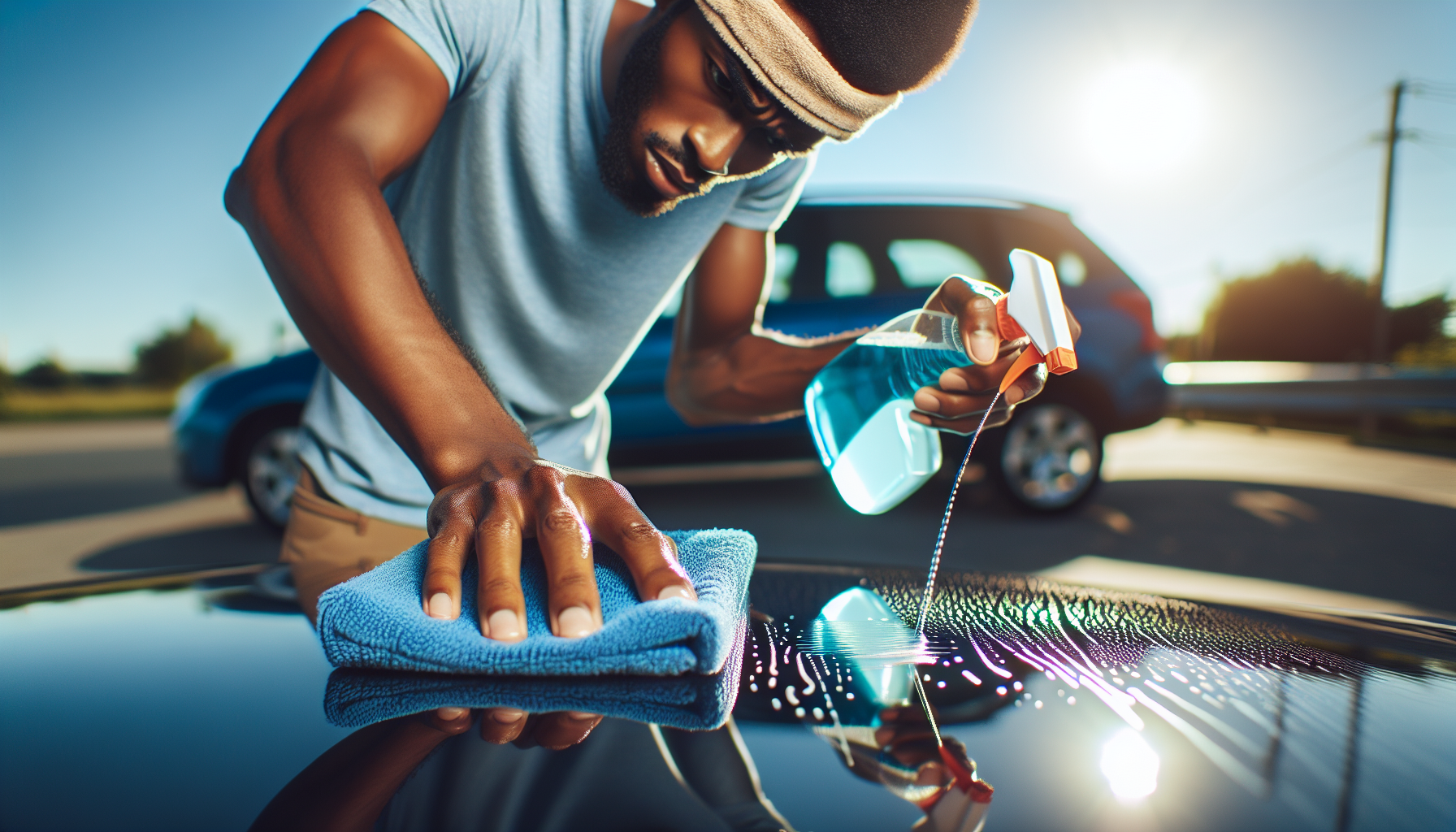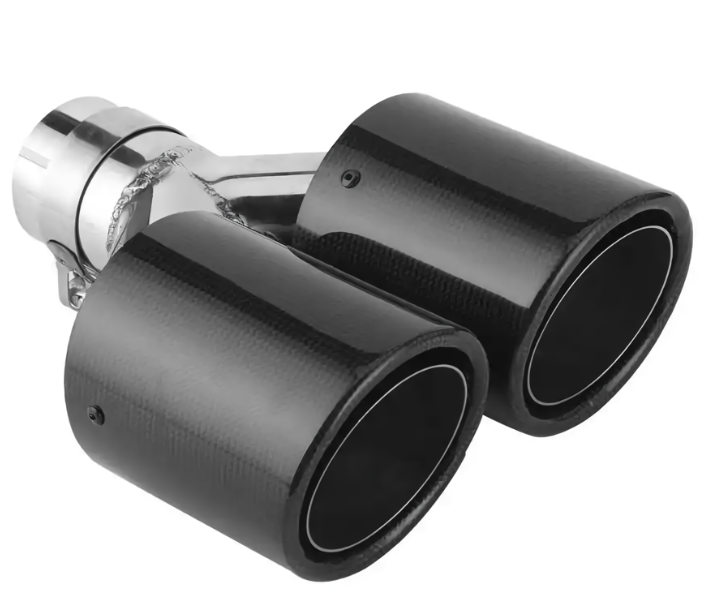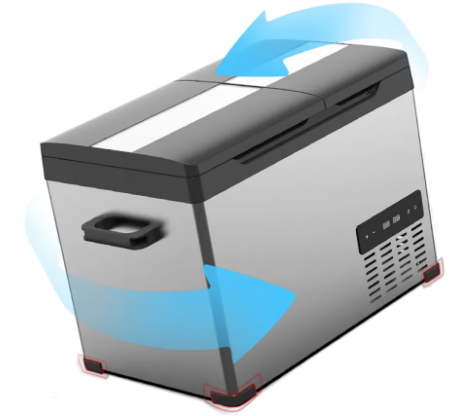Elevate Your Car’s Style with a Professional-Looking Vinyl Wrap Roof

Are you tired of the same old car roof looking like every other vehicle on the road? Do you want to stand out from the crowd and make a statement with your vehicle’s design? Look no further! Vinyl wrapping your car roof is a great way to give your vehicle a show-stopping uniform look that will turn heads wherever you go. With a wide range of vinyl wrap materials and designs to choose from, you can customize your car’s look to fit your personal style. Whether you’re a car enthusiast, a racing enthusiast, or just someone who wants to make a statement, vinyl wrapping your car roof is a great way to take your vehicle’s design to the next level.
In this article, we’ll take you through the step-by-step process of vinyl wrapping your car roof, from preparation to application and finishing touches. We’ll cover the necessary tools and materials, how to prepare your car roof for a smooth application, and the techniques for applying the vinyl wrap for a professional-looking finish. We’ll also provide tips on how to maintain your vinyl wrap to keep it looking its best.
With the right tools, materials, and techniques, vinyl wrapping your car roof can be a fun and rewarding DIY project that will give your vehicle a unique and eye-catching look. So why wait? Let’s get started and take your car’s design to new heights!
1. Prepare for a Pro-Look Finish
Before you start wrapping your car roof, it’s essential to prepare with the right tools and materials to achieve a professional-looking finish. With the right equipment, you’ll be able to ensure a smooth, bubble-free installation that will make your car stand out from the crowd. First, you’ll need to choose the right vinyl wrap material for your project. There are several types to choose from, including cast vinyl, calendared vinyl, and reflective vinyl, each with its own unique benefits and characteristics. For example, cast vinyl is a popular choice for car wraps because it’s highly conformable and can be stretched to fit tight curves and complex shapes.
Next, you’ll need to gather the necessary tools and equipment to apply the vinyl wrap. A heat gun is essential for conforming the vinyl to curved surfaces and edges, while a squeegee is necessary for applying even pressure and removing air bubbles. You’ll also need application fluid, which helps the vinyl wrap adhere to the car’s surface and prevents air bubbles from forming. Additionally, a trimming tool and a scraper can be useful for removing excess vinyl and cleaning up the edges.
With the right tools and materials, you’ll be well on your way to achieving a show-stopping uniform look that will make your car stand out. By taking the time to prepare and plan your project, you’ll be able to ensure a professional-looking finish that will last for years to come. So why wait? Get the right tools and materials, and start wrapping your car roof today!
Choose the Right Vinyl Wrap Material
When it comes to choosing the right vinyl wrap material for your car roof, there are several options to consider. Each type of vinyl wrap material has its own unique benefits and characteristics, making it essential to choose the right one for your project. Cast vinyl, for example, is a popular choice for car wraps because it’s highly conformable and can be stretched to fit tight curves and complex shapes. It’s also durable and resistant to fading, making it a great option for cars that are exposed to the elements.
Calendared vinyl, on the other hand, is a more economical option that’s still durable and easy to work with. It’s a great choice for beginners or for those who want to achieve a high-gloss finish. Reflective vinyl is another option that’s perfect for those who want to add an extra level of visibility and safety to their car. It’s made with reflective materials that shine brightly in the dark, making it a great option for cars that are driven at night or in low-light conditions.
By choosing the right vinyl wrap material for your project, you’ll be able to achieve a professional-looking finish that will last for years to come. Whether you’re looking for durability, ease of use, or a high-gloss finish, there’s a vinyl wrap material out there that’s perfect for you. So why settle for anything less? Choose the right vinyl wrap material and take your car’s design to the next level!
Gather Essential Tools and Equipment
Before you start wrapping your car roof, it’s essential to gather the necessary tools and equipment to ensure a smooth and successful installation. One of the most critical tools you’ll need is a heat gun, which is used to conform the vinyl wrap to curved surfaces and edges. A heat gun is also useful for removing air bubbles and wrinkles, ensuring a smooth and bubble-free finish.
Another essential tool is a squeegee, which is used to apply even pressure and remove excess vinyl wrap material. A squeegee is especially useful for wrapping complex shapes and curves, and can help you achieve a professional-looking finish. Additionally, you’ll need application fluid, which helps the vinyl wrap adhere to the car’s surface and prevents air bubbles from forming. This fluid is applied to the car’s surface before applying the vinyl wrap, and can make a big difference in the overall quality of the installation.
With the right tools and equipment, you’ll be able to achieve a professional-looking finish that will make your car stand out from the crowd. By investing in a heat gun, squeegee, and application fluid, you’ll be able to ensure a smooth and successful installation that will last for years to come. So why wait? Gather the necessary tools and equipment, and start wrapping your car roof today!
2. Clean and Prepare Your Car Roof

Before you start applying the vinyl wrap to your car roof, it’s essential to clean and prepare the surface to ensure a smooth and bubble-free installation. A dirty or contaminated surface can cause the vinyl wrap to bubble or peel off, ruining the entire installation. Start by washing the car roof with a mild soap and water to remove any dirt, dust, or debris. Then, use a cleaning solution specifically designed for car surfaces to remove any stubborn stains or contaminants.
Next, use a microfiber cloth to dry the car roof and remove any excess moisture. This will help prevent air bubbles from forming when you apply the vinyl wrap. If you find any scratches, dents, or rust spots on the car roof, now is the time to fix them. Use a scratch remover or a rust converter to repair any damaged areas, and then sand them down to a smooth finish. This will ensure that the vinyl wrap adheres evenly and smoothly to the car roof.
By taking the time to clean and prepare your car roof, you’ll be able to ensure a professional-looking finish that will last for years to come. A clean and smooth surface is essential for a successful vinyl wrap installation, and by following these steps, you’ll be able to achieve a bubble-free and smooth finish that will make your car stand out from the crowd. So why wait? Clean and prepare your car roof today, and get ready to wrap it like a pro!
Remove Dirt and Debris
Before applying the vinyl wrap to your car roof, it’s essential to remove any dirt, dust, and other contaminants that can affect the installation. A dirty or contaminated surface can cause the vinyl wrap to bubble or peel off, ruining the entire installation. To properly clean your car roof, start by washing it with a mild soap and water to remove any loose dirt or debris. Use a soft-bristled brush to gently scrub away any stubborn stains or dirt buildup.
Next, use a cleaning solution specifically designed for car surfaces to remove any tough stains or contaminants. Avoid using harsh chemicals or abrasive cleaners, as they can damage the car’s paint or harm the vinyl wrap. Instead, opt for a gentle cleaning solution that is safe for car surfaces. Use a microfiber cloth to apply the cleaning solution and wipe away any dirt or debris. This will help ensure that the car roof is clean and free of contaminants.
By taking the time to properly clean your car roof, you’ll be able to ensure a smooth and successful vinyl wrap installation. A clean surface is essential for a professional-looking finish, and by following these steps, you’ll be able to achieve a bubble-free and smooth finish that will make your car stand out from the crowd. So why wait? Remove dirt and debris from your car roof today, and get ready to wrap it like a pro!
Fix Any Roof Imperfections
Before applying the vinyl wrap to your car roof, it’s essential to fix any imperfections on the surface. Scratches, dents, and rust spots can cause the vinyl wrap to bubble or peel off, ruining the entire installation. To fix these imperfections, start by inspecting the car roof for any scratches or dents. If you find any, use a scratch remover or a dent repair kit to fix them. For rust spots, use a rust converter to neutralize the rust and prevent it from spreading.
Once you’ve fixed the imperfections, use a sanding block to smooth out the surface. This will help ensure that the vinyl wrap adheres evenly and smoothly to the car roof. Start with a coarse grit sandpaper and work your way up to a fine grit to achieve a smooth finish. Be sure to wipe away any dust or debris with a microfiber cloth to prevent it from getting trapped under the vinyl wrap.
By taking the time to fix any roof imperfections, you’ll be able to ensure a smooth and successful vinyl wrap installation. A smooth surface is essential for a professional-looking finish, and by following these steps, you’ll be able to achieve a bubble-free and smooth finish that will make your car stand out from the crowd. So why wait? Fix any roof imperfections today, and get ready to wrap it like a pro!
3. Apply the Vinyl Wrap
Applying the vinyl wrap to your car roof is a straightforward process that requires some patience and attention to detail. Start by cleaning the car roof surface to ensure a smooth and bubble-free installation. Then, use a measuring tape to measure the car roof and mark the center point of the roof. This will help you align the vinyl wrap correctly.
Next, peel the backing off the vinyl wrap and apply it to the car roof, starting from the center point and working your way outwards. Use a squeegee to apply even pressure and remove any air bubbles or wrinkles. Use a heat gun to conform the vinyl wrap to curved surfaces and edges, and to remove any excess material. Make sure to apply the vinyl wrap slowly and carefully to avoid bubbles or wrinkles.
By following these steps, you’ll be able to achieve a professional-looking installation that will make your car stand out from the crowd. Remember to take your time and work slowly, as this will ensure a smooth and bubble-free finish. With the right tools and techniques, you’ll be able to achieve a vinyl wrap installation that looks like it was done by a pro!
Apply the Vinyl Wrap with a Squeegee
Applying the vinyl wrap with a squeegee is a crucial step in the installation process. The squeegee is used to apply even pressure to the vinyl wrap, removing any air bubbles or wrinkles. To start, hold the squeegee at a 45-degree angle and apply gentle pressure to the vinyl wrap. Start at the center of the roof and work your way outwards, using long, smooth strokes to cover the entire surface.
As you apply the vinyl wrap, make sure to use a consistent and even pressure. This will help to prevent air bubbles from forming and ensure a smooth, bubble-free finish. If you do encounter an air bubble, don’t worry! Simply use the squeegee to push the bubble to the edge of the roof, where it can be easily removed. By using the squeegee correctly, you’ll be able to achieve a professional-looking finish that will make your car stand out from the crowd.
Remember to take your time and work slowly when applying the vinyl wrap with a squeegee. This will help you to avoid mistakes and ensure a smooth, bubble-free finish. With the right techniques and tools, you’ll be able to achieve a vinyl wrap installation that looks like it was done by a pro!
Use Heat to Conform the Vinyl Wrap
Conforming the vinyl wrap to curved surfaces and edges can be a challenging task, but with the right techniques and tools, it’s easier than you think. One of the most effective ways to conform the vinyl wrap is by using heat. Heat guns are specifically designed to apply heat to the vinyl wrap, allowing it to stretch and conform to curved surfaces and edges.
To use heat to conform the vinyl wrap, start by applying the wrap to the curved surface or edge. Then, use a heat gun to apply heat to the wrap, starting at the center and working your way outwards. The heat will cause the vinyl wrap to stretch and conform to the surface, ensuring a smooth and uniform finish. Make sure to use a consistent and even temperature, as excessive heat can damage the vinyl wrap.
By using heat to conform the vinyl wrap, you’ll be able to achieve a professional-looking finish that will make your car stand out from the crowd. Remember to take your time and work slowly, as this will help you to avoid mistakes and ensure a smooth, uniform finish. With the right techniques and tools, you’ll be able to achieve a vinyl wrap installation that looks like it was done by a pro!
4. Finishing Touches and Maintenance
The final step in the vinyl wrap installation process is to add the finishing touches and ensure a long-lasting and show-stopping finish. This includes removing any excess vinyl wrap, applying a laminate to protect the wrap from the elements, and ensuring that all edges are sealed and secure.
To maintain your vinyl wrap and keep it looking its best, it’s essential to wash your car regularly and avoid using harsh chemicals or abrasive cleaners. You should also avoid parking your car in direct sunlight for extended periods, as this can cause the vinyl wrap to fade. Additionally, consider applying a vinyl wrap protection kit to provide an extra layer of protection against the elements.
By following these simple maintenance tips, you’ll be able to keep your vinyl wrap looking like new for years to come. Remember, a well-maintained vinyl wrap is not only a great way to personalize your car, but it’s also a great way to protect the paint and increase the resale value of your vehicle. So why wait? Finish your vinyl wrap installation today and start enjoying the benefits of a show-stopping finish!
Remove Excess Vinyl Wrap
Removing excess vinyl wrap and trimming the edges is a crucial step in the installation process. Not only does it ensure a professional finish, but it also helps to prevent peeling or lifting of the wrap. To start, use a trimming tool to remove any excess vinyl wrap around the edges and contours of the car.
Next, use a razor blade or a trimmer to carefully trim the edges of the vinyl wrap, making sure to follow the natural curves and lines of the car’s design. Be careful not to cut too much or too little, as this can affect the overall appearance of the wrap. If you’re unsure, it’s always better to err on the side of caution and trim a little at a time, checking your progress as you go.
By following these simple steps, you’ll be able to achieve a professional-looking finish that will make your car stand out from the crowd. Remember, attention to detail is key, so take your time and work slowly to ensure a flawless finish. With the right tools and techniques, you’ll be able to remove excess vinyl wrap and trim the edges like a pro!
Maintain Your Vinyl Wrap
Congratulations on completing your vinyl wrap installation! Now, it’s essential to maintain your wrap to keep it looking its best. Regular cleaning and maintenance will help to extend the lifespan of your wrap and ensure it remains vibrant and eye-catching.
To clean your vinyl wrap, use a mild soap and water solution, and avoid using harsh chemicals or abrasive cleaners. You can also use a microfiber cloth to gently wipe down the wrap and remove any dirt or debris. For more stubborn stains, you can use a specialized vinyl wrap cleaner. Additionally, consider applying a vinyl wrap protectant to provide an extra layer of protection against the elements.
By following these simple cleaning and maintenance tips, you’ll be able to keep your vinyl wrap looking like new for years to come. Remember, a well-maintained vinyl wrap is not only a great way to personalize your car, but it’s also a great way to protect the paint and increase the resale value of your vehicle. So why wait? Start maintaining your vinyl wrap today and enjoy the benefits of a show-stopping finish!
What is the best type of vinyl wrap for my car?
The best type of vinyl wrap for your car depends on your personal preferences, climate, and driving conditions. Cast vinyl is a popular choice for car wraps because it’s highly conformable and durable, while calendared vinyl is a more economical option. Reflective vinyl is great for added visibility and safety.
How long does a vinyl wrap installation take?
The installation time varies depending on the complexity of the design, the size of the vehicle, and the installer’s expertise. On average, a vinyl wrap installation can take anywhere from 2 to 5 days.
Can I install a vinyl wrap myself?
While it’s possible to install a vinyl wrap yourself, it’s recommended to hire a professional installer with experience and the right equipment. A professional installer can ensure a flawless, bubble-free installation that will last longer.
How do I remove a vinyl wrap?
Removing a vinyl wrap requires patience and the right tools. Start by applying heat to the wrap to loosen the adhesive, then use a razor blade or trimmer to carefully remove the wrap. Be careful not to scratch the paint or leave residue behind.
Is a vinyl wrap worth the investment?
A vinyl wrap can be a valuable investment for your car, providing a unique and personalized look that can increase the resale value of your vehicle. Additionally, a vinyl wrap can protect the paint and provide a cost-effective alternative to a new paint job.


